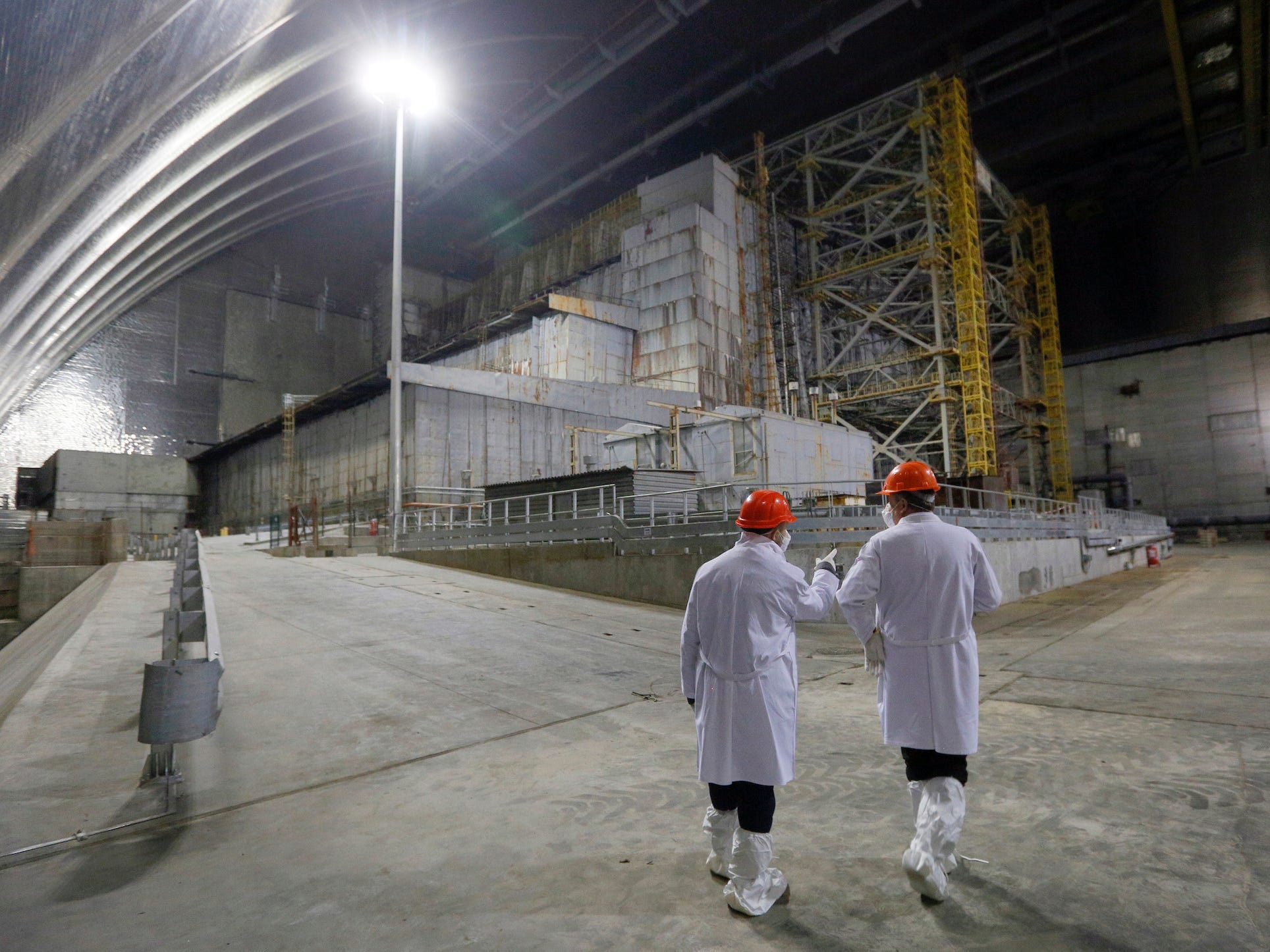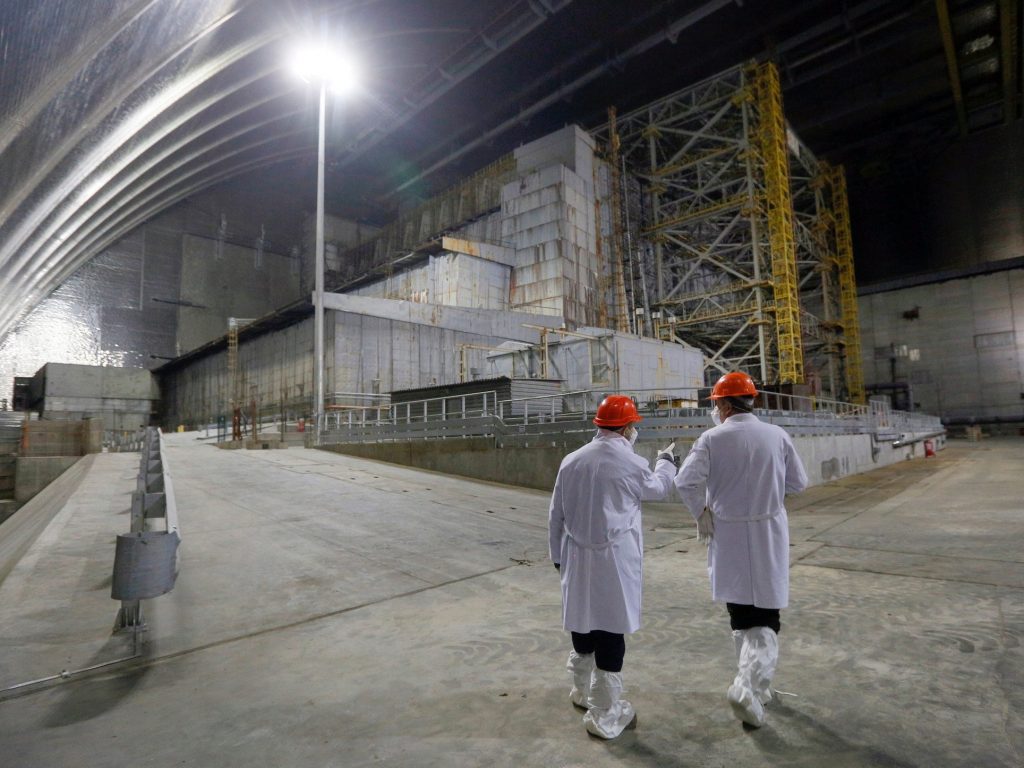
AP Photo/Efrem Lukatsky
- Nuclear reactions are smoldering again in an inaccessible basement at the Chernobyl Nuclear Power Plant.
- It's a "possibility" that another nuclear accident could take place, a researcher told Science magazine.
- Any potential explosion, however, would likely be less catastrophic than the 1986 Chernobyl disaster.
- See more stories on Insider's business page.
Nuclear reactions are smoldering again in uranium fuel masses deep inside an unreachable basement room of the Chernobyl Nuclear Power Plant in Ukraine, LiveScience reported.
A rising number of neutrons can signal new fission reactions. Researchers at the catastrophic 1986 explosion site have recently detected a steady spike in neutron numbers in an underground room called 305/2, LiveScience said.
The radioactive waste is smoldering "like the embers in a barbecue pit," Neil Hyatt, a professor of nuclear materials science and engineering at the University of Sheffield, told Science magazine.
And it's possible, according to scientists, that the embers could fully ignite and result in another explosion. "There are many uncertainties," Maxim Saveliev, a senior researcher with the Institute for Safety Problems of Nuclear Power Plants (ISPNPP) in Kyiv, Ukraine, told Science. "But we can't rule out the possibility of [an] accident."
A potential explosion is unlikely to be as deadly as the 1986 Chernobyl disaster that killed around 50 people and resulted in thousands of radiation-related deaths. A $1.8bn protective confinement shelter, the New Safe Confinement (NCS), was built in 2019 to prevent the release of radioactive contamination.
The shelter was also expected to keep neutron counts low, Science magazine said. While this has worked in most areas covered by the NCS, Room 305/2 has seen neutron levels rising for four consecutive years. This could continue for several more years without causing an accident and it might eventually resolve itself, Saveliev said.
But scientists will have to step in if the numbers continue to spike, Saveliev warned.
Ukraine hopes to present a detailed plan for doing this and work towards removing Chernobyl's nuclear waste by September, Science reported.
